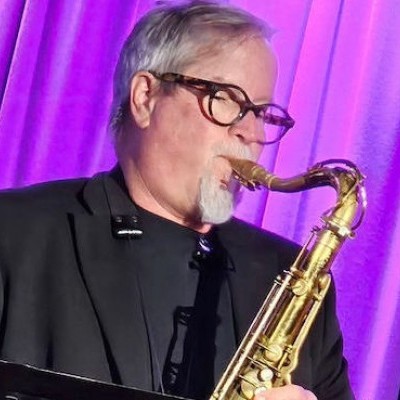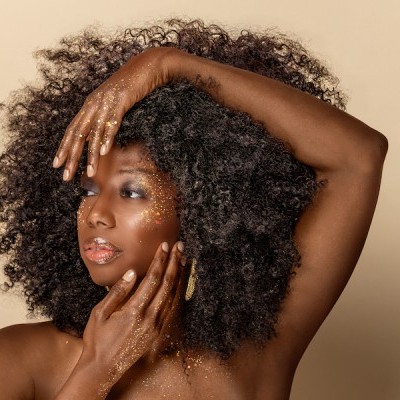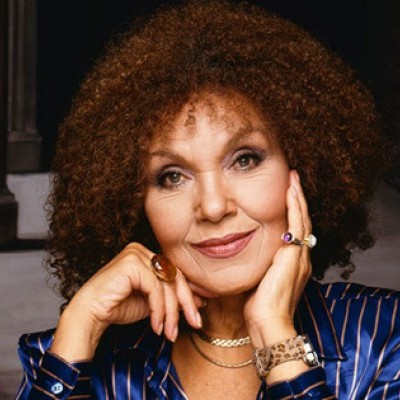Oct 28, 2025 10:47 AM
In Memoriam: Jack DeJohnette, 1942–2025
Jack DeJohnette, a bold and resourceful drummer and NEA Jazz Master who forged a unique vocabulary on the kit over his…

Adam Nussbaum’s new Sunnyside release is titled The Lead Belly Project.
(Photo: Courtesy of the artist)For four decades, drummer Adam Nussbaum has been a reliably swinging fixture on the scene, providing the syncopated pulse for a variety of artists, including John Scofield, Gil Evans, John Abercrombie, Eliane Elias, Stan Getz, James Moody, Dave Liebman and many others. In recent years, he has been involved in cooperative groups like The Nuttree Quartet, BANN, The Impossible Gentlemen, We3 and another trio with saxophonist Ohad Talmor and Steve Swallow. But in more than 40 years as a road warrior with innumerable recording credits as a sideman, Nussbaum never recorded a project as a leader. Until now.
The Norwalk, Connecticut, native heads up The Lead Belly Project, a Feb. 23 Sunnyside Records release that has him re-imagining tunes by the folk legend with an intrepid crew of improvisers in saxophonist Talmor and a stellar guitar tandem of Nate Radley and Steve Cardenas. It’s Nussbaum’s homage to his childhood hero, whose records grabbed him long before he had encountered recordings of Jimi Hendrix, John Coltrane, Miles Davis or any of the many jazz drummers who would set the tone for his own exploration on the kit. The veteran drummer spoke to Downbeat by phone from his home about an hour north of Manhattan.
This interview has been edited for length and clarity.
You’ve always been highly regarded as a drummer in the Elvin Jones mode, but this new project is coming from a wholly different point of view.
When I first heard Elvin Jones, that was after I had heard Jimi Hendrix. I was 11, 12 years old when Hendrix came on the scene. I heard him and was completely enamored with that music. Then about a year later, I heard Coltrane, and it was like, “Wait a minute. This drummer kind of sounds like that guy from Jimi Hendrix Experience.” So, I did hear the cart before the horse.
That sounds like guitarist Dave Fiuczynski, who once told me when he first heard Hendrix, long after he had passed, he thought, “Man, this guy’s ripping off Hiram Bullock.”
Right. A lot of guys hear the children before the father. So, basically, I was just very much drawn to that way of playing, kind of a more open, loose, more interactive way of playing, where the drums were really part of the whole musical fabric, not just a metronome.
That whole going over the bar-line aesthetic, like what Mitch Mitchell does on “If 6 Was 9.”
There’s a whole lot of examples of Mitch doing that. Anyway, that first Hendrix record, Are You Experienced?, was so defining for me. But I was digging Leadbelly even before that. My parents had a very diverse record collection—classical music, jazz, ethnic music, Spanish music, blues, gamelan music, you name it. And they had these two Leadbelly records. And if you look on the back cover of my CD, you see those two original records pictured. Those Leadbelly records were among the first records that really grabbed me as a little kid, like when I was 4, 5 years old. The blues and folk music really resonated with me. And I never forgot those Leadbelly tunes. Because when you’re young, those things burn deep into your being like nursery rhymes.
So, what triggered your idea of doing The Lead Belly Project, and why now?
When I decided to do this project, I was thinking that nowadays I’m hearing so much music that sounds like math and science. I’m somebody where there has to be a visceral connection to the music. There has to be something there that’s real honest and truthful. And I was looking for some nice, simple material. Because truth be told, when you have great musicians, you don’t need to give them anything complicated, you just need to give them a springboard to improvise. So, part of this was me reflecting on what’s going on and thinking, “I want to do something where I just have some great cats, use some simple music and just play.”
You know, I’m 62 years old now. This was the first CD I’ve released under my own name. I have coordinated several projects, but I never wanted to do it under my name because I figured, “I’m just coordinating it and everybody’s got a piece of the influence here.” But this was something where I figured, “I’m not getting any younger and I don’t have to prove anything to anybody at this point. I’m proud of this recording; I feel good about it. And it’s totally connected to my history, doing this Leadbelly thing.
Steve Cardenas and Nate Radley have great, almost intuitive interaction throughout this album.
You know what it is? These cats listen. And that’s what I wanted. I needed guys who know how to listen. Everybody now can play. Everybody that you hear … all the kids have got chops for days. They all have the ability, but you need some time to figure out your sensibility. All these kids, man, they got more ability than I ever have had. But if we go to an audition for a gig, I’m going to get the gig, you know what I’m saying? Because you can’t learn the experience that just comes with time. And in this band, I don’t need guys with chops up the yin-yang, I need guys who know how to listen. That’s where it’s at. You got two guitar players, one guy goes high, the other guy goes low.
I’m familiar with Ohad Talmor from his various projects as a player and arranger for Lee Konitz. Have you recorded with him before?
I worked with him and Swallow a bunch. He’s an extremely high-level musician and a beautiful cat, and I wanted to just do something different on this project, so I called him. Because people always want to put you in a box, people want to label you. New York especially can be pretty brutal that way. But there’s a lot more to all of us than how we’re generally thought of and represented.
You really break through that box in so many ways on this recording, not only with the rubato brushes playing on “Green Corn” or “Grey Goose,” but also you throw in that second-line groove on “Black Betty.” That’s a whole different world of playing right there.
I consider myself an erase-ist. Let’s erase all the categories; good music is good music. Whatever I play, I wanna play it and be honest about it. And I’m the product of everything I’ve heard and everything I’ve experienced.
You put such a personal spin on each tune. I wonder how some of the young chops-oriented players would handle the relaxed rubato intros you have on some of these tunes, like “Old Riley,” “Green Corn” or “Bring Me A Little Water, Sylvie.”
Well, it takes a lot of discipline to get this relaxed. I just wanted things to naturally unfold on this record. You’ll notice that none of the tunes are really that long. And I still think of it as a record. I don’t think of songs, I think of a story.
You have a book, you read the introduction, you get into it, slowly the story unfolds and then it comes to a conclusion. I mean, we start nice with “Old Riley” and then what could be better than finishing with “Good Night Irene.” I was just trying to make some music here, man. And when you make a record, you try to take people on a little adventure and let the story unfold. Nowadays, it’s a different world. People want to get individual files. That’s like instead of reading a book, you read chapter 3, then chapter 7, then chapter 2 and then chapter 9. But what about trying to get some kind of story going? What about trying to create something that has peaks and valleys and takes people on a little adventure?
This bass-less quartet approach really opens up the music and lets it breathe more.
Lord knows I’ve played with some of the greatest bass players. This created another character. It just put me in another light. People say I’m coming out of Elvin and maybe Mel Lewis. Well, those are my fathers; I make no bones about it. I was so grateful to be able to grow up in New York and be able to hear those guys from the time I was young, not just on records but see them, know them, and they were all so supportive of me. These guys helped to build a foundation of understanding, and I’m just trying to work on the building.
You play some beautiful brushes on The Lead Belly Project. It’s kind of a signature of yours throughout the record. Do you feel like you’re channeling someone in that department?
Everyone I’ve ever seen has affected me. Everyone I’ve ever heard has affected me, in terms of things I want to do and also things I don’t want to do. And I was able to see quite a few of the masters, which was very important to me. Because brushes is something you gotta see, in order to get the vibe. When you hear a guy playing with sticks, you can kind of figure out what he’s doing. But with brushes, you don’t have a clue what is physically going on. Is the guy going clockwise, counter-clockwise? You don’t know what kind of motion is going on.
I coordinated something with Steve Smith for Hudson Music about 10 years ago, a DVD project called The Art of Playing With Brushes. We got Charli Persip, Ben Riley, Eddie Locke, Billy Hart, Joe Morello, Steve Smith and myself. Basically, I wanted to document those players and have it be a guide for people, so they would have an idea about different options you would have in order to play the brushes. It’s seven hours long, because we have seven guys playing all different feels and tempos, so you can see how it’s done. And everybody who plays brushes has a different choreography. Truth be told, it should’ve been done in the early ‘60s when you had [Kenny Clarke] around; you had Shelly Manne, Papa Jo Jones, Mel Lewis … You know, the cats who really knew how to do this. So, I got the cats that I could at the time, and right after it was finished, Joe Morello passed away; then Eddie Locke passed away; now Ben Riley’s gone. There’s not many left, bro’.
I mean, I feel so grateful to have been able to sit next to most of my heroes. You know, sitting in the Village Vanguard in the corner right by the drums. I mean, that’s my jazz corner of the world. It wasn’t virtual, it was actual. It didn’t come from a book, it didn’t come from a record. Of course, books and records were things that I investigated, but there’s no substitute like being in the room right there. When I go to the Vanguard today, I still sit in that seat and just think of all the history I was able to absorb and feel. I mean, Roy Haynes, Tony Williams, Bernard Purdie, Shelly Manne, Vernell Fournier, Mickey Roker, Billy Higgins, Al Foster, Billy Hart, Joe Chambers. These cats used to sit next to their heroes when they were young and get inspired. It just keeps going.
And you’re part of that continuum.
Listen, this is something that I realize. So, now when there’s a young drummer checking me out, it reminds me of when I was at the Vanguard in the corner right by the drums, checking out my heroes. And those cats were all generous. They were all very giving and very supportive, and I am grateful for that. Elvin was a sweetheart to me, Mel Lewis, Jabali, Haynes, Blakey, Jack DeJohnette, cats who aren’t even that well known, like Eddie Moore and Eddie Marshall. If I start naming them all, I’ll forget others. Everybody was cool with me, man. Everybody was giving. They must’ve seen something in how I was looking at them. They saw my love, my passion and they remember when they were in the same position, sitting next to their guys when they were young and getting inspired.
It seems like there is a particularly strong fraternity among drummers.
The drum thing is different than guitar players or trumpet players. There’s a more competitive thing going on there with those instruments. But with drummers, it’s more of a brotherhood. And at the end of the day, we know that the quickest way to change the sound of the band is to change the drummer. We can make a band, we can break a band. And there’s a certain camaraderie. We all get together and it’s a good feeling, it’s a beautiful scene, man. You know, we’re all just trying to get that groove together … make the band feel good, make everybody happy. That’s why we’re going to work. It ain’t about us sounding good, it’s about helping the band sound good. DB

Jack DeJohnette boasted a musical resume that was as long as it was fearsome.
Oct 28, 2025 10:47 AM
Jack DeJohnette, a bold and resourceful drummer and NEA Jazz Master who forged a unique vocabulary on the kit over his…

“I’ve told students, ‘I don’t mind if you use AI for this or that project,’” says MIT’s Pascal Le Boeuf. “‘But you need to tell me.’”
Sep 18, 2025 11:14 AM
A standard joke when it comes to discussing artificial intelligence, or AI, is that it’s developing so rapidly that…

Chuck Manning Works for NASA … and plays jazz.
Sep 18, 2025 11:23 AM
Congratulations! After years of study, you’ve earned your degree in jazz performance. But let’s face it: Making a…

Gadabout Season developed over many months of recording sessions in Brandee Younger’s East Harlem living room.
Sep 16, 2025 11:52 AM
When she’s on the road, Brandee Younger enters a hybrid state of action and contemplation. Free of daily distractions…

Cleo Laine, 1927–2025
Sep 16, 2025 10:03 AM
The music world mourns the loss of three important artists from the realms of jazz, blues and beyond with the recent…